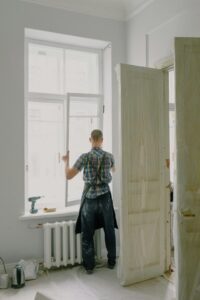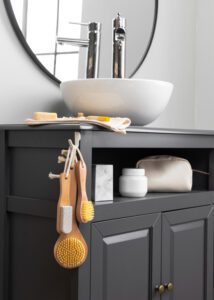Summer can transform even the most modern, well-insulated homes into uncomfortably warm spaces. While passive houses are designed to harness sunlight for energy efficiency during colder months, excessive solar exposure in summer can quickly turn living spaces into a heat trap. Managing this balance is crucial for comfort, energy efficiency, and long-term sustainability. This article provides practical strategies to prevent your home from overheating, highlights common mistakes, and explores modern solutions that combine functionality with aesthetics.
Understanding the heat problem in modern homes
Many energy-efficient homes, especially passive houses, are designed with large south-facing windows to maximize winter solar gain. While this reduces heating costs in cold months, the same windows can allow excessive heat during the summer. Without proper shading, indoor temperatures can rise significantly, making living spaces uncomfortable and increasing reliance on air conditioning. According to Dr. Emily Johnson, a European building energy expert at the Technical University of Munich, “Proper window orientation and shading are critical in maintaining energy-efficient homes that remain comfortable year-round.”
Practical ways to reduce summer heat
Exterior shading solutions
Protecting windows from the outside is far more effective than interior solutions. Exterior shading prevents sunlight from entering and heating interior surfaces. Fasade blinds, overhangs, and awnings are particularly effective. For example, horizontal fasade blinds with adjustable lamellas allow sunlight to be blocked while maintaining outdoor views. Overhangs and pergolas can shade windows while letting lower winter sun pass through. A study by the American Society of Heating, Refrigerating and Air-Conditioning Engineers (ASHRAE) shows that properly designed exterior shading can reduce indoor temperatures by up to 5–7°C during peak summer months.
Landscaping and natural barriers
Trees, shrubs, and trellises are natural, low-maintenance ways to reduce heat. Strategically planting deciduous trees on the south or west side provides shade in summer while allowing sunlight in winter after leaves fall. Green walls and climbing plants on trellises can also cool outdoor walls and reduce heat transfer into the home. Professor Laura Martinez from the University of Barcelona emphasizes that “integrating vegetation into residential design not only improves thermal comfort but also contributes to air quality and overall well-being.”
Interior adjustments
While exterior shading is the most effective, interior measures like reflective window films, blackout curtains, or thermal blinds can reduce heat gain. However, relying solely on interior solutions may be insufficient, especially in homes with large south-facing windows, because heat that enters can still affect indoor temperatures. Homeowners should combine interior and exterior solutions for the best results.
Investing in smart fasade blinds
Modern technology offers automated shading solutions that enhance both comfort and energy efficiency. Fasade blinds equipped with sensors and smart systems adjust automatically based on sunlight intensity, indoor temperature, and wind conditions. This automation ensures optimal shading throughout the day without constant manual adjustments.
For instance, a home with automated fasade blinds might have:
- A sunlight intensity sensor outside to detect brightness levels.
- Indoor temperature sensors to maintain a comfortable environment.
- Wind sensors to protect the blinds during storms.
- Smartphone integration for remote control and scheduling.
These systems are particularly effective during transitional seasons like spring and autumn when sunlight can rapidly affect indoor temperatures. Automated blinds allow sunlight in when needed and provide shading when temperatures rise, maintaining consistent comfort. According to Michael Stevens, a US-based smart home specialist, “Homes equipped with automated shading systems can reduce cooling energy use by 20–30% annually, which is a significant benefit for both cost savings and sustainability.”
Common mistakes to avoid
1. Ignoring exterior shading
Many homeowners invest in interior solutions first, but blocking sunlight from the inside has limited impact on overall heat gain.
2. Poor planning during construction
Retroactively installing fasade blinds or overhangs can be challenging and expensive. Planning shading solutions during the design phase allows for better integration with the home’s architecture and prevents visual obstructions or thermal bridges.
3. Neglecting maintenance
Even low-maintenance systems require occasional checks. Ensure that sensors and motorized components function correctly, and clean external surfaces to prevent dust accumulation that can reduce efficiency.
Visual and functional benefits
Modern fasade blinds not only control heat but also enhance the home’s aesthetics. When raised, they are virtually invisible from the outside. When lowered, they provide a clean, modern appearance that complements architectural design. In addition, they offer added privacy and increased security by protecting windows from potential damage. Dr. Sophie Williams, a building design researcher from London, notes that “Visual integration of blinds into the building façade improves both functionality and overall property value.”
Energy efficiency and cost savings
Effective shading reduces reliance on air conditioning, leading to lower electricity bills. Homes with automated shading systems can maintain comfortable indoor temperatures without mechanical cooling, significantly reducing energy consumption. For example, families living in passive homes with fasade blinds have reported indoor temperatures never exceeding comfortable levels during peak summer months, even without active cooling. The European Commission’s 2023 Energy Efficiency Report indicates that smart shading solutions can save households up to 25% on annual energy costs.
Expert recommendations and practical advice
Keeping a home cool during summer requires a combination of smart design, effective shading, and thoughtful planning. Key takeaways include:
- Prioritize exterior shading over interior solutions for maximum efficiency.
- Use automated fasade blinds for convenience, energy savings, and comfort.
- Plan shading solutions during the design stage to integrate with architecture.
- Consider landscaping and natural barriers as complementary methods.
- Avoid relying solely on interior blinds or films, which offer limited relief.
Architectural consultant David O’Reilly from Dublin adds, “Combining exterior shading with landscaping can reduce indoor temperatures substantially while enhancing the home’s curb appeal.” These measures, combined with proactive planning and regular maintenance, ensure homes remain cool, energy-efficient, and visually appealing throughout the summer months.
Summary and conclusion
Managing summer heat in modern homes requires a holistic approach that integrates exterior shading, smart technology, landscaping, and interior adjustments. Investing in automated fasade blinds not only improves comfort but also contributes to energy efficiency and long-term cost savings. Homeowners are encouraged to plan shading solutions during the design phase, combine methods for maximum effect, and maintain systems regularly to preserve functionality. By following these strategies and integrating expert recommendations, it is possible to enjoy a cooler, more comfortable living environment while protecting property value and sustainability. Smart planning and holistic design are key to ensuring that summer remains pleasant without compromising the benefits of passive energy-efficient homes.








